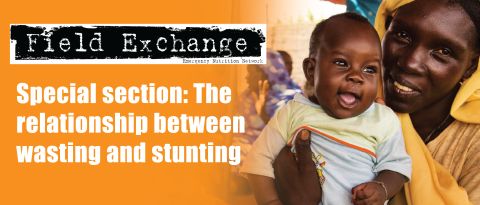Simplified approaches website
Wasted children are up to 11 times more likely to die than those who are well nourished and currently treatment services only reach a third of children in need. Simplified approaches refer to a number of simplifications to existing national and global protocols for wasting treatment. These aim to improve the effectiveness, quality and coverage of treatment for child wasting while also reducing costs. The most commonly implemented and researched simplifications are provided in Box 1.
Box 1. Common simplifications for the treatment of child wasting
- Family mid-upper arm circumference (MUAC): training and equipping caregivers to screen their children for malnutrition by MUAC and the identification of oedematous malnutrition
- Community health worker (CHW)-led treatment: enabling and empowering CHWs to treat uncomplicated cases of wasting in the community
- Reduced frequency of follow-up visits: reducing the frequency of follow-up visits for admitted children from weekly to biweekly or monthly
- MUAC and/or oedema only: using MUAC and/or oedema as the only criteria for admission and discharge
- Expanded admission criteria: increasing the MUAC cut-off to admit all children <125 mm (or another agreed cut-off)
- Use of a single treatment product: treating all uncomplicated wasting cases with one product; i.e., ready-to-use therapeutic food (RUTF), despite the severity of wasting
- Reduced dosage: reducing the dosage of treatment product used
Multiple modifications are often used together in a ‘simplified’ or ‘combined’ protocol. This enables the harmonisation and simplification of services into a single approach, making services easier to implement whilst maintaining quality standards.
The simplified approaches website was developed by UNICEF in collaboration with partners from the Simplified Approaches Working Group. This global working group was established in 2020, bringing together child health and nutrition organisations and agencies to support the use of simplified approaches in response to the COVID-19 pandemic. The website provides a platform to share tools and resources to support the implementation and scale-up of simplified approaches.
As part of the website, the simplified approaches dashboard contains information on where simplifications are being implemented in order to improve coordination, maximise the potential for learning and support the translation of evidence to action. Information on the 52 countries currently engaged in implementing simplified approaches, alongside related publications, can be filtered according to the type of simplified approach or the region of implementation. Users can also contact the website directly to add relevant information to the dashboard. Other reports, studies and tools are also available, including quick guidance documents, reviews of evidence and planning and implementation tools.
The website can be accessed at: https://www.simplifiedapproaches.org/


